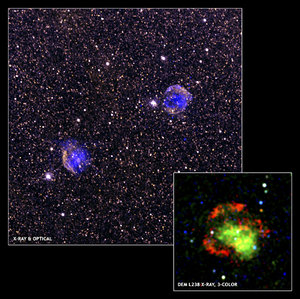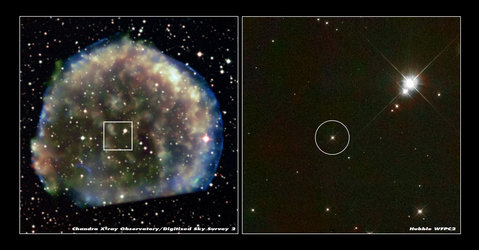Accept all cookies Accept only essential cookies See our Cookie Notice

About ESA
The European Space Agency (ESA) is Europe’s gateway to space. Its mission is to shape the development of Europe’s space capability and ensure that investment in space continues to deliver benefits to the citizens of Europe and the world.
Highlights
ESA - United space in Europe
This is ESA ESA facts Member States & Cooperating States Funding Director General Top management For Member State Delegations European vision European Space Policy ESA & EU Space Councils Responsibility & Sustainability Annual Report Calendar of meetings Corporate newsEstablishments & sites
ESA Headquarters ESA ESTEC ESA ESOC ESA ESRIN ESA EAC ESA ESAC Europe's Spaceport ESA ESEC ESA ECSAT Brussels Office Washington OfficeWorking with ESA
Business with ESA ESA Commercialisation Gateway Law at ESA Careers Cyber resilience at ESA IT at ESA Newsroom Partnerships Merchandising Licence Education Open Space Innovation Platform Integrity and Reporting Administrative Tribunal Health and SafetyMore about ESA
History ESA Historical Archives Exhibitions Publications Art & Culture ESA Merchandise Kids Diversity ESA Brand Centre ESA ChampionsLatest
Space in Member States
Find out more about space activities in our 23 Member States, and understand how ESA works together with their national agencies, institutions and organisations.
Science & Exploration
Exploring our Solar System and unlocking the secrets of the Universe
Go to topicAstronauts
Missions
Juice Euclid Webb Solar Orbiter BepiColombo Gaia ExoMars Cheops Exoplanet missions More missionsActivities
International Space Station Orion service module Gateway Concordia Caves & Pangaea BenefitsLatest
Space Safety
Protecting life and infrastructure on Earth and in orbit
Go to topicAsteroids
Asteroids and Planetary Defence Asteroid danger explained Flyeye telescope: asteroid detection Hera mission: asteroid deflection Near-Earth Object Coordination CentreSpace junk
About space debris Space debris by the numbers Space Environment Report In space refuelling, refurbishing and removingSafety from space
Clean Space ecodesign Zero Debris Technologies Space for Earth Supporting Sustainable DevelopmentLatest
Applications
Using space to benefit citizens and meet future challenges on Earth
Go to topicObserving the Earth
Observing the Earth Future EO Copernicus Meteorology Space for our climate Satellite missionsCommercialisation
ESA Commercialisation Gateway Open Space Innovation Platform Business Incubation ESA Space SolutionsLatest
Enabling & Support
Making space accessible and developing the technologies for the future
Go to topicBuilding missions
Space Engineering and Technology Test centre Laboratories Concurrent Design Facility Preparing for the future Shaping the Future Discovery and Preparation Advanced Concepts TeamSpace transportation
Space Transportation Ariane Vega Space Rider Future space transportation Boost! Europe's Spaceport Launches from Europe's Spaceport from 2012Latest

X-ray and optical images of aftermath of supernova
Thank you for liking
You have already liked this page, you can only like it once!
This combination of X-ray and optical images shows the aftermath of a powerful supernova explosion in the Large Magellanic Cloud (LMC), a small galaxy about 160 000 light-years from Earth.
The debris from this explosion, the supernova remnant SNR 0509-67.5, is shown in a Chandra X-ray Observatory image (upper inset), where the lowest energy X-rays are shown in red, the intermediate energies are green and the highest energies are blue. In 2004, scientists used Chandra to show that SNR 0509-67.5 was likely caused by a Type Ia supernova, using an analysis of the elements, such as silicon and iron that were detected. A Type Ia is thought to result from a white dwarf star in a binary system that reaches a critical mass and explodes.
The light echo image (lower inset), from the Cerro Tololo Inter-American Observatory (CTIO) 4-m telescope, shows light from the original supernova explosion that has bounced off dust clouds in the neighbouring regions of the LMC (the light echoes are shown in blue and stars in orange). The light from these echoes travels a longer path than the light that travels straight toward us, and so can be seen hundreds of years after the supernova itself. This image is one of a sequence of five images taken between 2001 and 2006 that are shown separately in a time-lapse movie.
The large optical image is from the Magellanic Cloud Emission Line Survey (MCELS), obtained with the 0.9m telescope at CTIO. Emission lines of hydrogen (H-alpha) are red, singly-ionised sulphur is green and doubly-ionised oxygen is blue. The image highlights regions of star formation in the LMC, including supernova remnants and giant structures carved out by multiple supernovas.
For the first time astronomers have used two methods - X-ray observations of a supernova remnant and optical observations of the expanding light echoes from the explosion - to estimate the energy of a supernova blast. In two separate papers, astronomers concluded that the supernova occurred about 400 years ago (in Earth's time frame), and was unusually bright and energetic. This is the best ever determination of the power of a supernova explosion long after it was visible from Earth.
In the new optical study, spectra of the light echo, obtained from the Gemini Observatory, were used to confirm that the supernova was a Type Ia and to unambiguously determine the particular class of explosion and therefore its energy. In the new X-ray study, spectra from Chandra and ESA's XMM-Newton
Observatory were then independently used to calculate the amount of energy involved in the original explosion, using an analysis of the supernova remnant and state-of-the-art explosion models.
The X-ray work also concluded that the explosion was an especially energetic and bright variety of Type Ia supernova, confirming the validity of the explosion models.
Credits:
Chandra: NASA/ CXC/ Princeton/ C.Badenes et al.
MCELS: NOAO/ AURA/ NSF/ S.Points, C.Smith & MCELS team
Light echo: NOAO/ CTIO/ Harvard/ A.Rest et al.
-
CREDIT
ESA -
LICENCE
ESA Standard Licence

Marvel at stunning echo of 800-year-old explosion

Two supernova remnants in Large Magellanic Cloud

Multicoloured view of supernova remnant

Tycho's Supernova, SN 1572A















 Germany
Germany
 Austria
Austria
 Belgium
Belgium
 Denmark
Denmark
 Spain
Spain
 Estonia
Estonia
 Finland
Finland
 France
France
 Greece
Greece
 Hungary
Hungary
 Ireland
Ireland
 Italy
Italy
 Luxembourg
Luxembourg
 Norway
Norway
 The Netherlands
The Netherlands
 Poland
Poland
 Portugal
Portugal
 Czechia
Czechia
 Romania
Romania
 United Kingdom
United Kingdom
 Slovenia
Slovenia
 Sweden
Sweden
 Switzerland
Switzerland

























